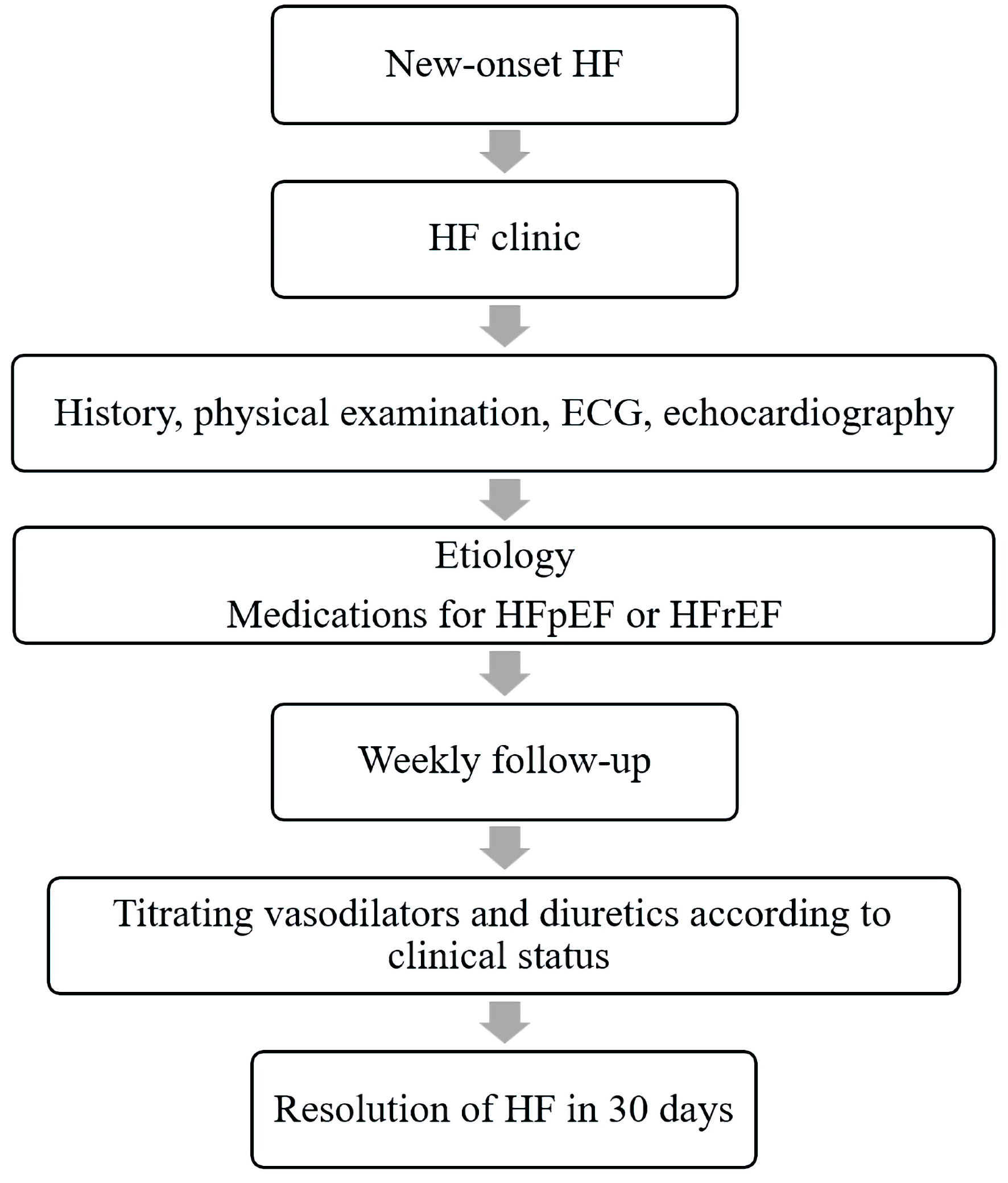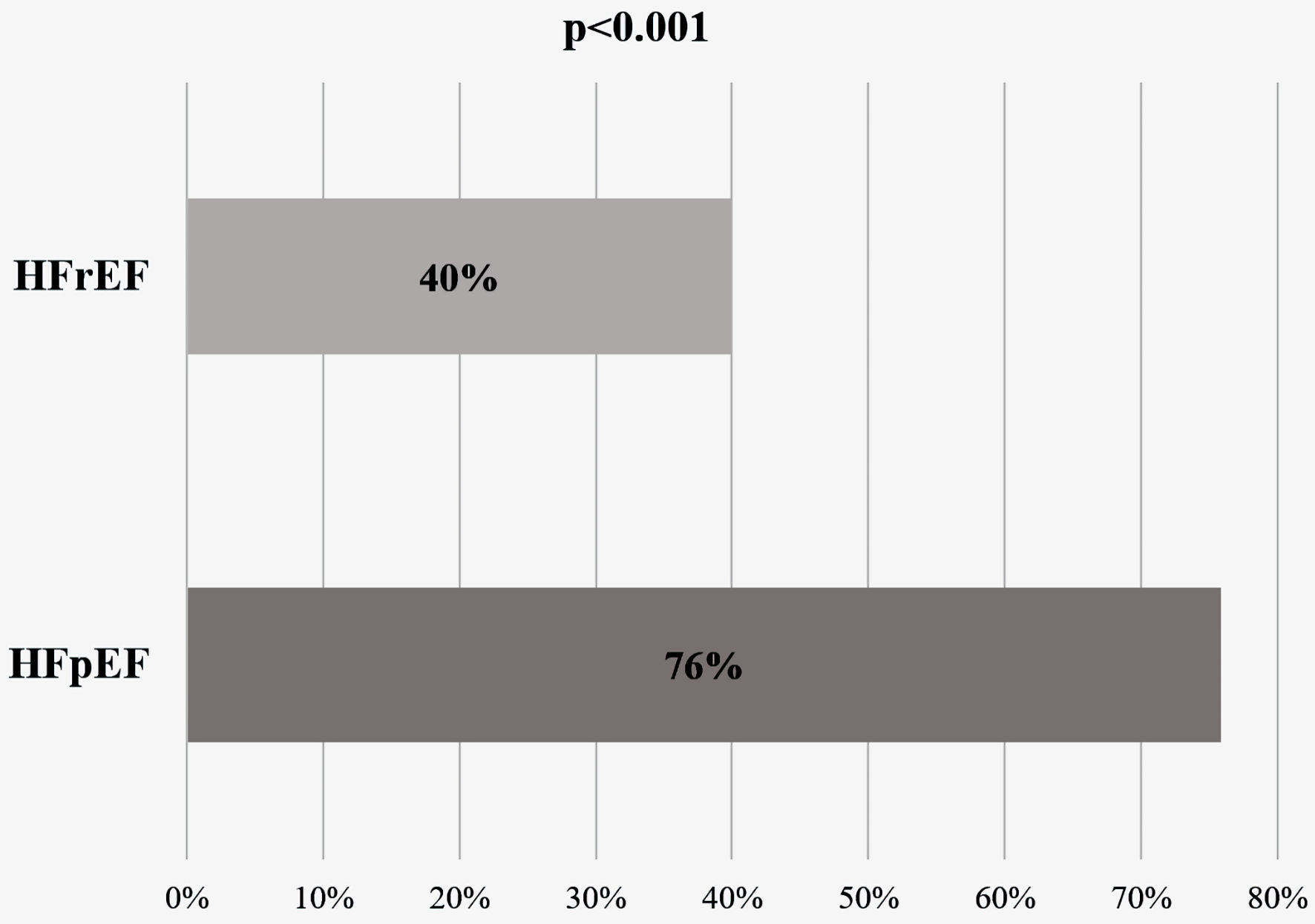
Figure 1. The flow diagram of the patients. All patients with new-onset heart failure (HF) were included in the study. The clinical characteristics and findings of electrocardiography (ECG) and echocardiography were recorded. Patients were diagnosed with HF preserved ejection fraction (HFpEF) or HF with reduced EF (HFrEF) and started medical therapy. They were followed up once weekly, and medications were titrated according to clinical status. The response to medical therapy was evaluated on the basis of resolution of HF in 30 days.
